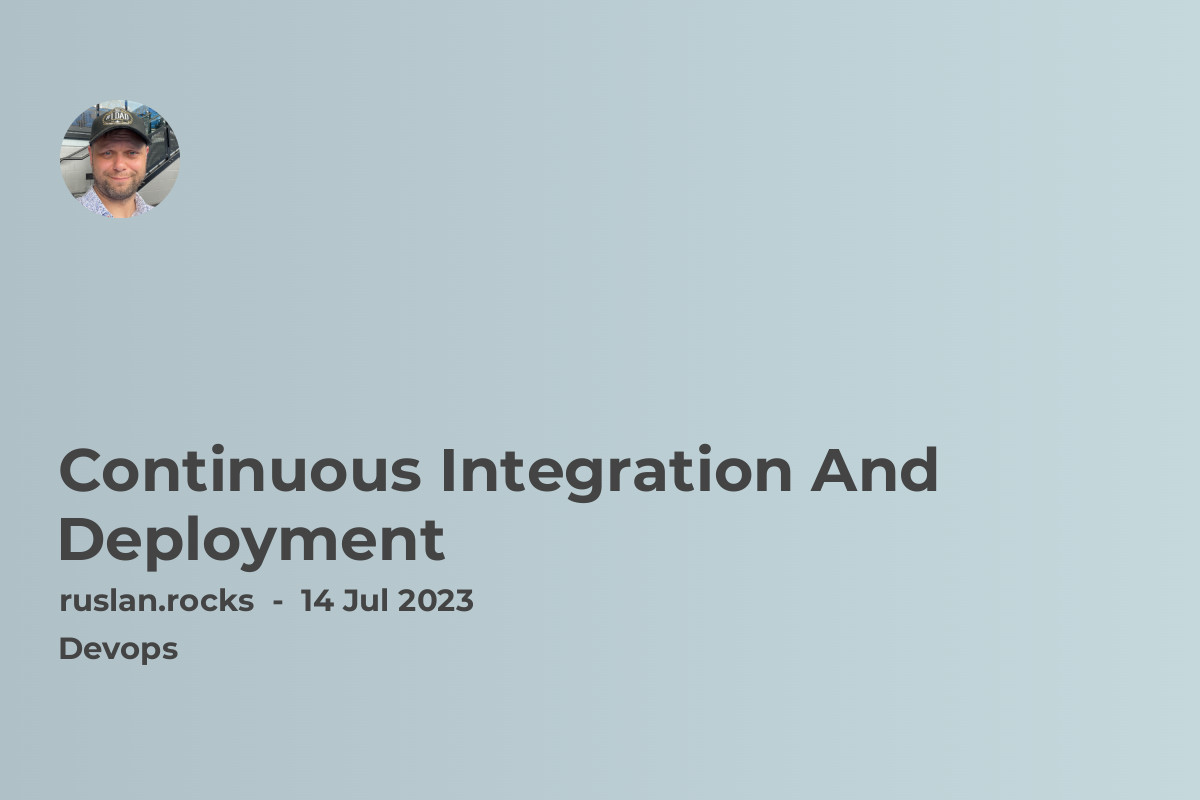- Benefits of Continuous Integration And Deployment
- Continuous Integration vs. Continuous Deployment
- Setting Up a CI/CD Pipeline
- Best Practices for Successful CI/CD Implementation
- Conclusion

Continuous Integration and Deployment (CI/CD) is a set of practices that enable developers to automate the process of integrating code changes and deploying software applications. It allows teams to release software faster and with more confidence by continually testing and validating changes throughout the development process.
CI/CD is crucial in modern software development as it helps teams automate repetitive tasks, reduce manual errors, and increase collaboration. By following CI/CD practices, developers can build, test, and deploy code changes quickly and efficiently, leading to faster time to market and improved software quality.
Benefits of Continuous Integration And Deployment
CI/CD offers several benefits to both individuals and teams. Firstly, it enables developers to catch bugs and issues early in the development process. By running automated tests every time code changes are made, teams can quickly identify and address any failures or regressions, ensuring that software remains stable and reliable.
Secondly, CI/CD promotes collaboration and transparency within development teams. By continuously integrating code changes and providing visibility into the build and test results, developers can easily track and resolve conflicts, ensuring that all team members are working on the most up-to-date version of the code.
Thirdly, CI/CD allows for rapid and frequent releases of software. By automating the deployment process, teams can release updates to production environments more frequently, providing users with new features and bug fixes without causing disruptions.
Lastly, CI/CD enables teams to improve software quality through continuous feedback and improvement. By running automated tests on each code change, developers can ensure that new features and changes do not introduce new bugs or regressions, maintaining a high level of quality throughout the development lifecycle.
Continuous Integration vs. Continuous Deployment
While Continuous Integration (CI) and Continuous Deployment (CD) are often used together, they refer to different stages of the development process.
Continuous Integration focuses on the frequent integration of code changes into a shared repository. With CI, developers are encouraged to merge their code changes frequently, ideally at least once a day. As part of the integration process, automated tests are run to verify the correctness and stability of the code.
Continuous Deployment, on the other hand, is the process of automatically deploying changes to production environments. Once code changes have passed the automated tests and have been merged into the main branch, they are automatically deployed to the production environment without any manual intervention.
Setting Up a CI/CD Pipeline
To implement CI/CD, teams typically set up a pipeline that automates the different stages of the development process, including building, testing, and deploying code changes.
The pipeline starts with a version control system where developers commit their code changes. Whenever a new commit is made, the pipeline is triggered, and the code is built into an executable artifact. This artifact is then tested using automated tests to ensure that it meets the required quality standards.
If the tests pass successfully, the artifact is deployed to an environment for further testing or directly to production. The deployment can be done using various techniques such as manual approvals, canary releases, or blue-green deployments.
Throughout the pipeline, teams can use various tools and technologies to automate and streamline the process. Popular CI/CD tools include Jenkins, GitLab CI/CD, and CircleCI.
Best Practices for Successful CI/CD Implementation
Implementing CI/CD successfully requires following best practices to ensure the effectiveness and efficiency of the pipeline. Here are some key practices to consider:
-
Automate everything: Automate as many tasks as possible, including build, test, and deployment processes. This minimizes manual errors and reduces the time and effort required for repetitive tasks.
-
Keep pipelines simple: Keep your CI/CD pipelines simple and focused. Avoid adding unnecessary complexity or dependencies that could introduce additional points of failure.
-
Test early and often: Run automated tests on every code change to catch issues early in the development process. This helps identify and fix bugs before they reach production.
-
Maintain version control: Keep your codebase and configuration files under version control to ensure traceability and reproducibility of deployments.
-
Monitor and log: Implement monitoring and logging mechanisms to track the performance and health of your deployed applications. This helps identify and address issues quickly.
By following these best practices, teams can build robust and efficient CI/CD pipelines that enhance their development processes and deliver high-quality software consistently.
Conclusion
Continuous Integration and Deployment (CI/CD) is a transformative approach to software development that enables teams to release applications faster and with higher quality. By automating the integration, testing, and deployment processes, teams can quickly respond to changing requirements, catch bugs early, and deliver valuable software to end-users.
For more information on related topics, check out the following articles:
-
Best Practices for Git Branching Strategy for Multiple Environments: Learn about the best practices when using Git branches for managing deployments to multiple environments.
-
Introduction to Containerization: Understand the concept of containerization and its benefits in modern software development and deployment.
-
Docker vs. Kubernetes: Choosing the Right Container Orchestration Platform: Explore the differences between Docker and Kubernetes and learn which container orchestration platform may be suitable for your projects.
-
Microservices Architecture Benefits: Discover the advantages and challenges of adopting a microservices architecture in software development.
-
DevOps Practices: Streamlining Development and Operations: Get insights into essential DevOps practices that help organizations deliver software more rapidly and reliably.
Implementing CI/CD can greatly enhance the efficiency and quality of your software development process. By embracing automation and best practices, you can deliver software faster, reduce risks, and improve collaboration within your development team.
